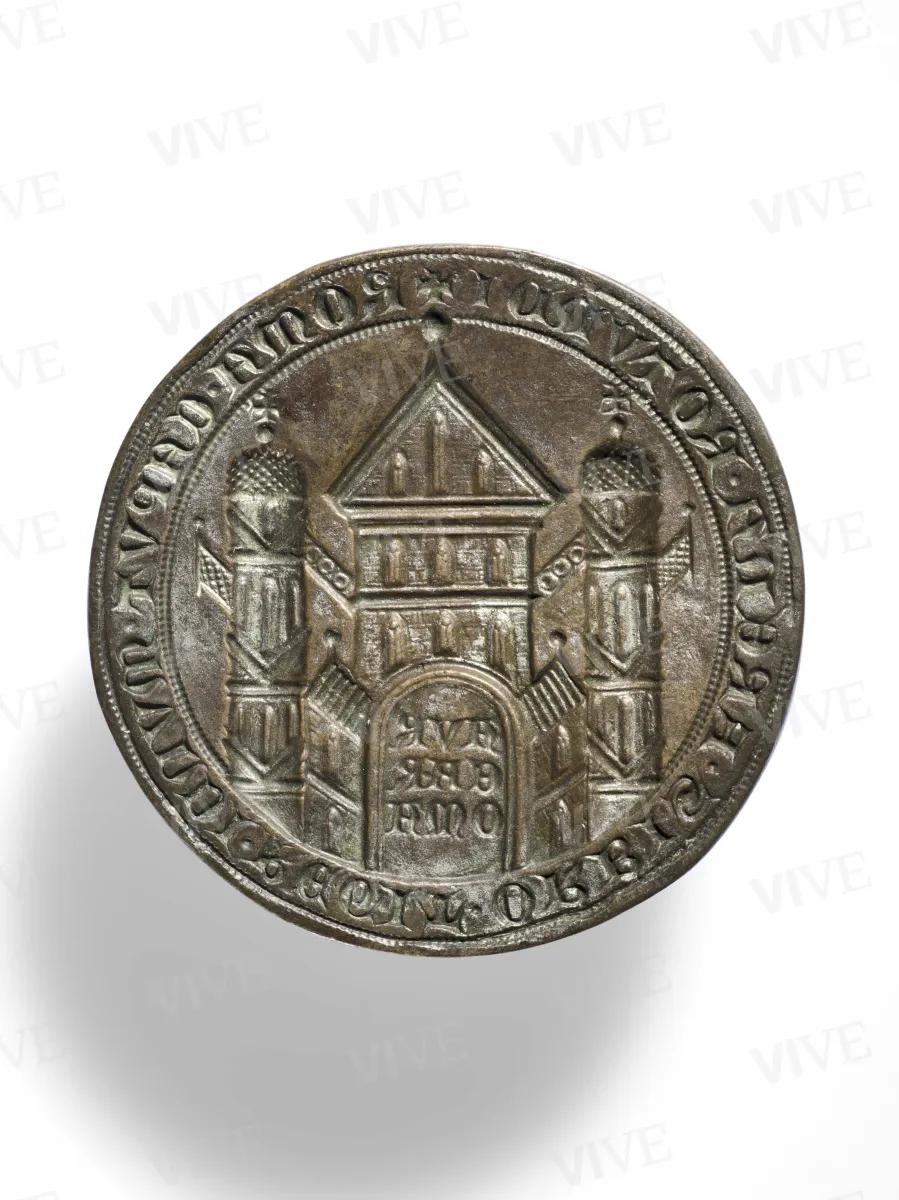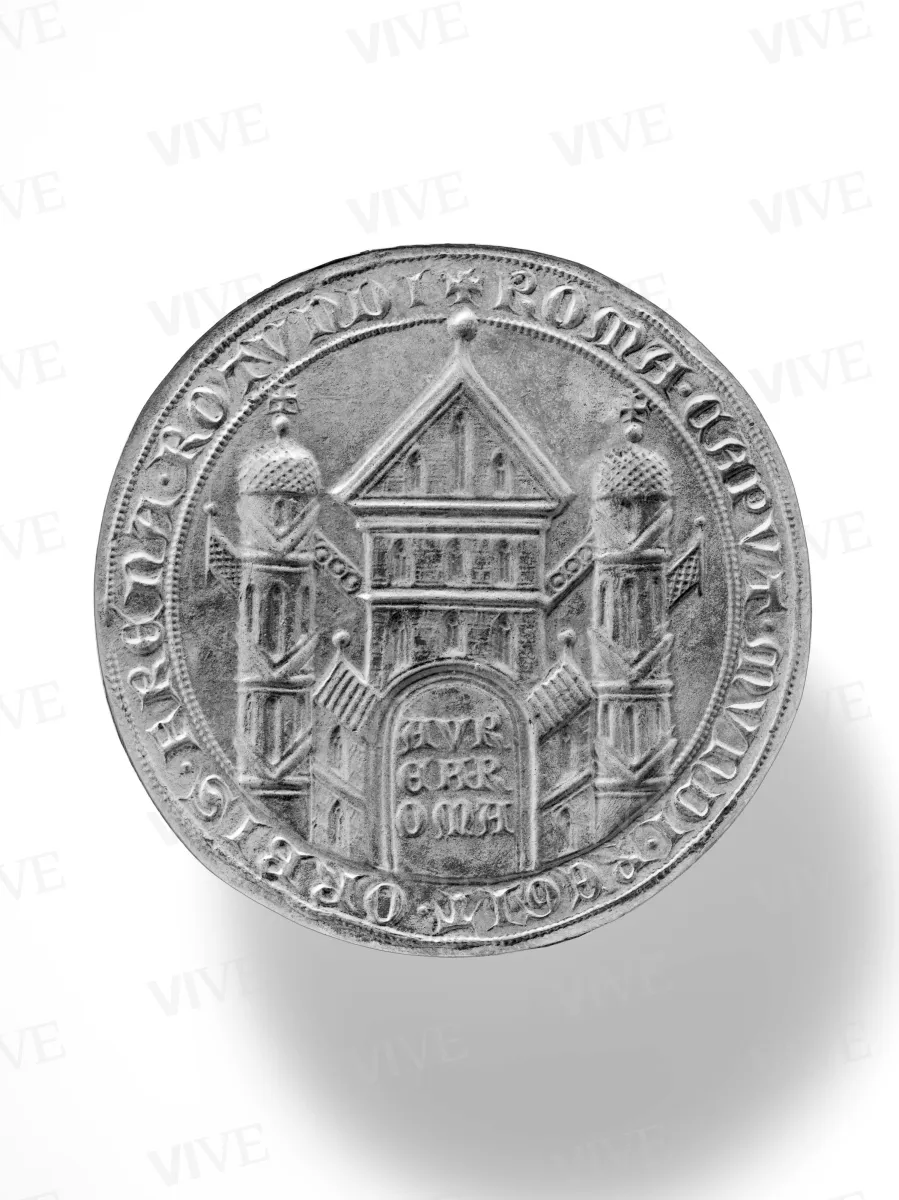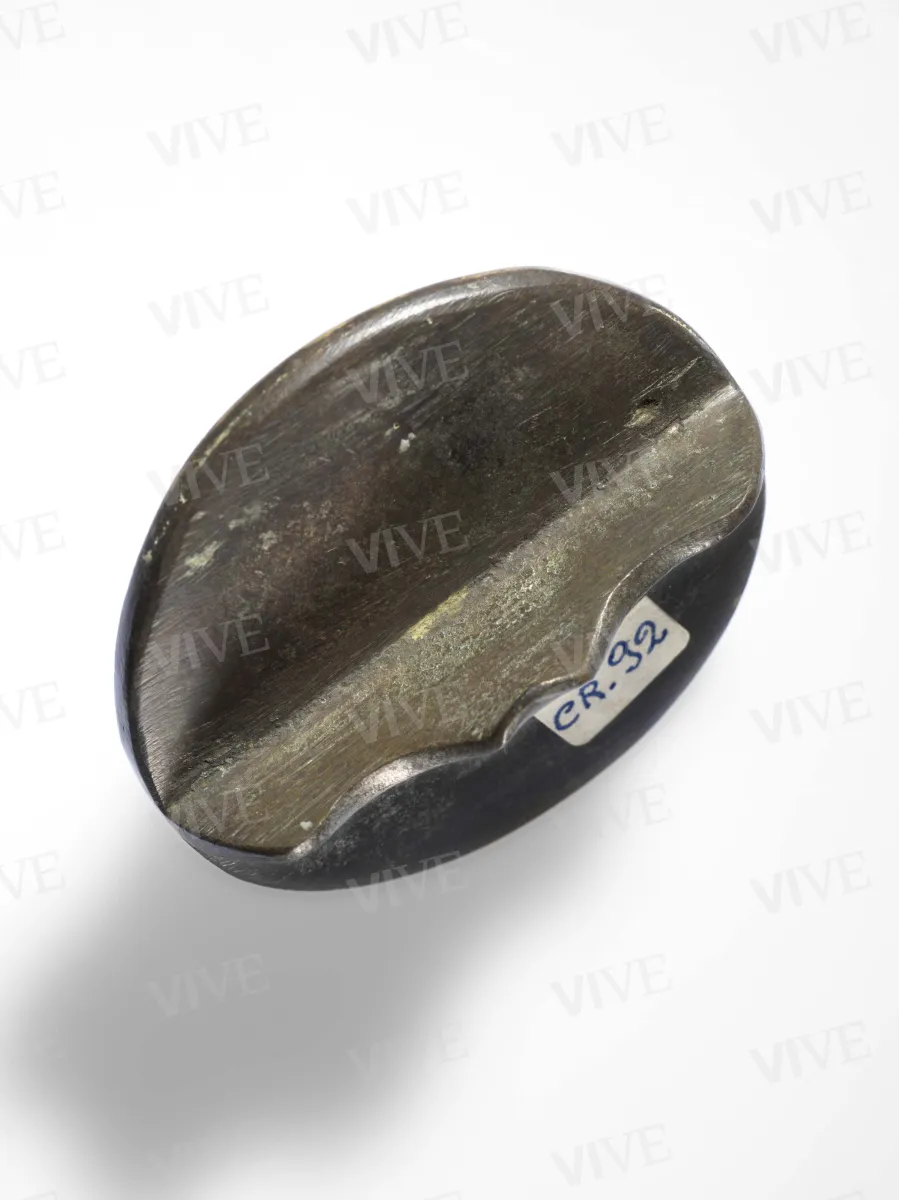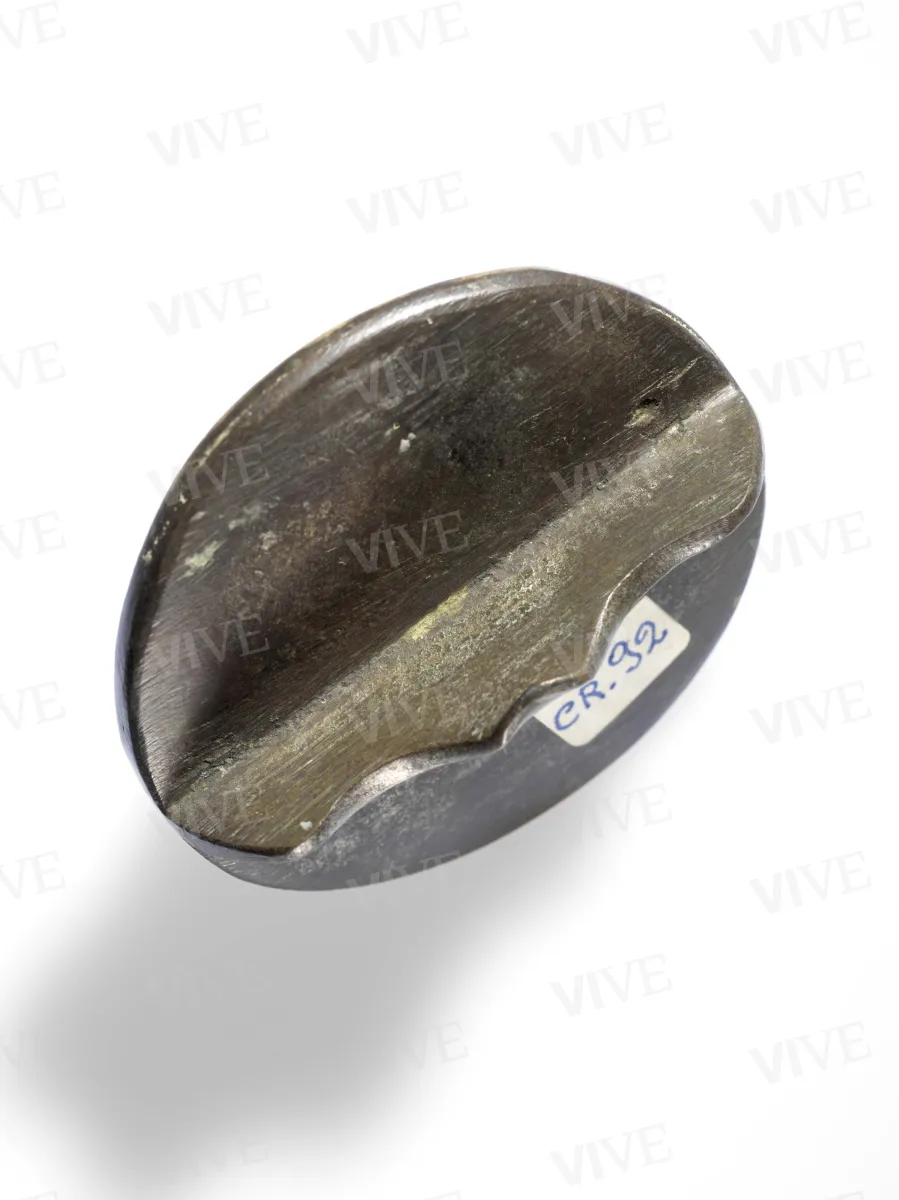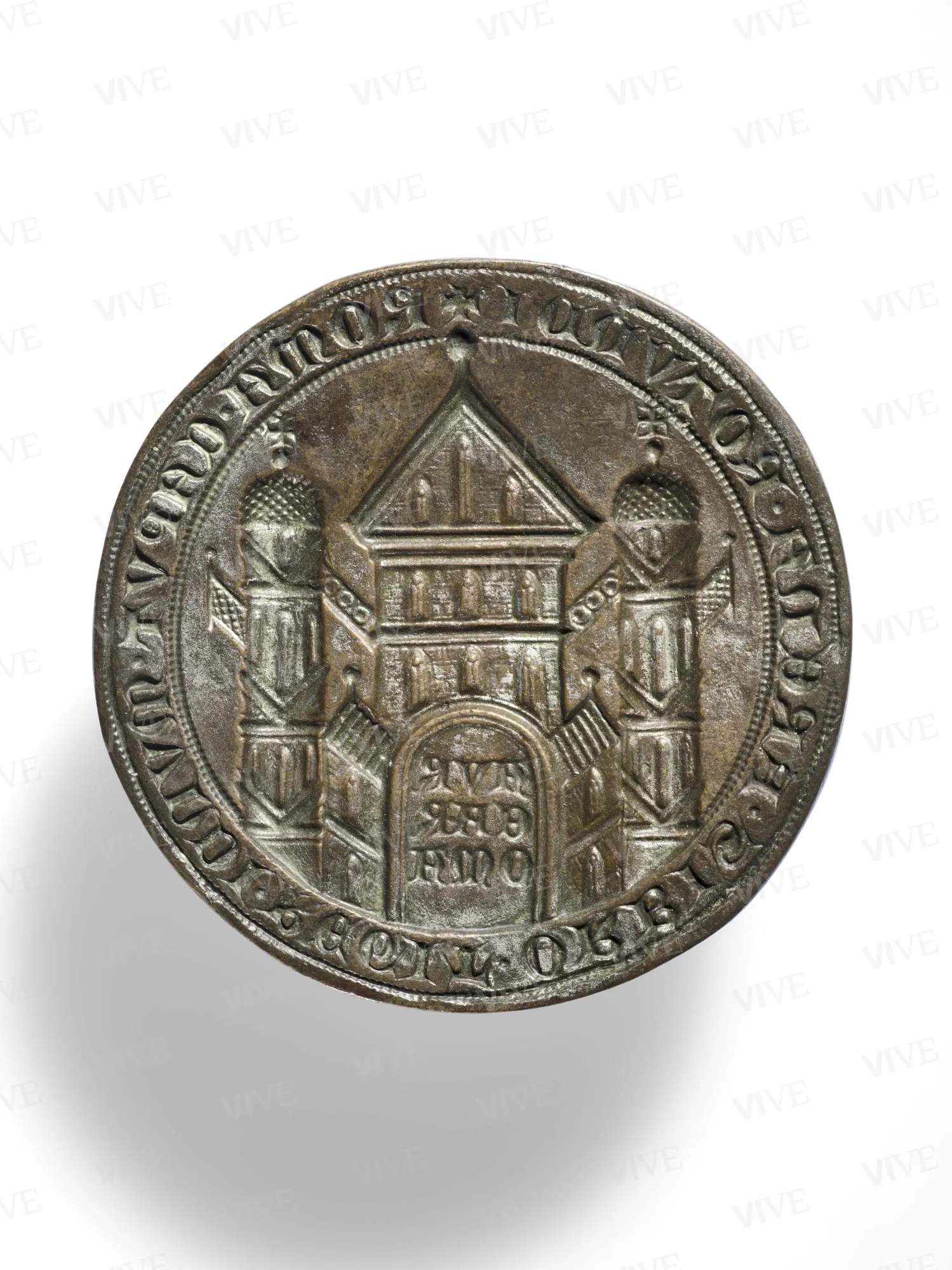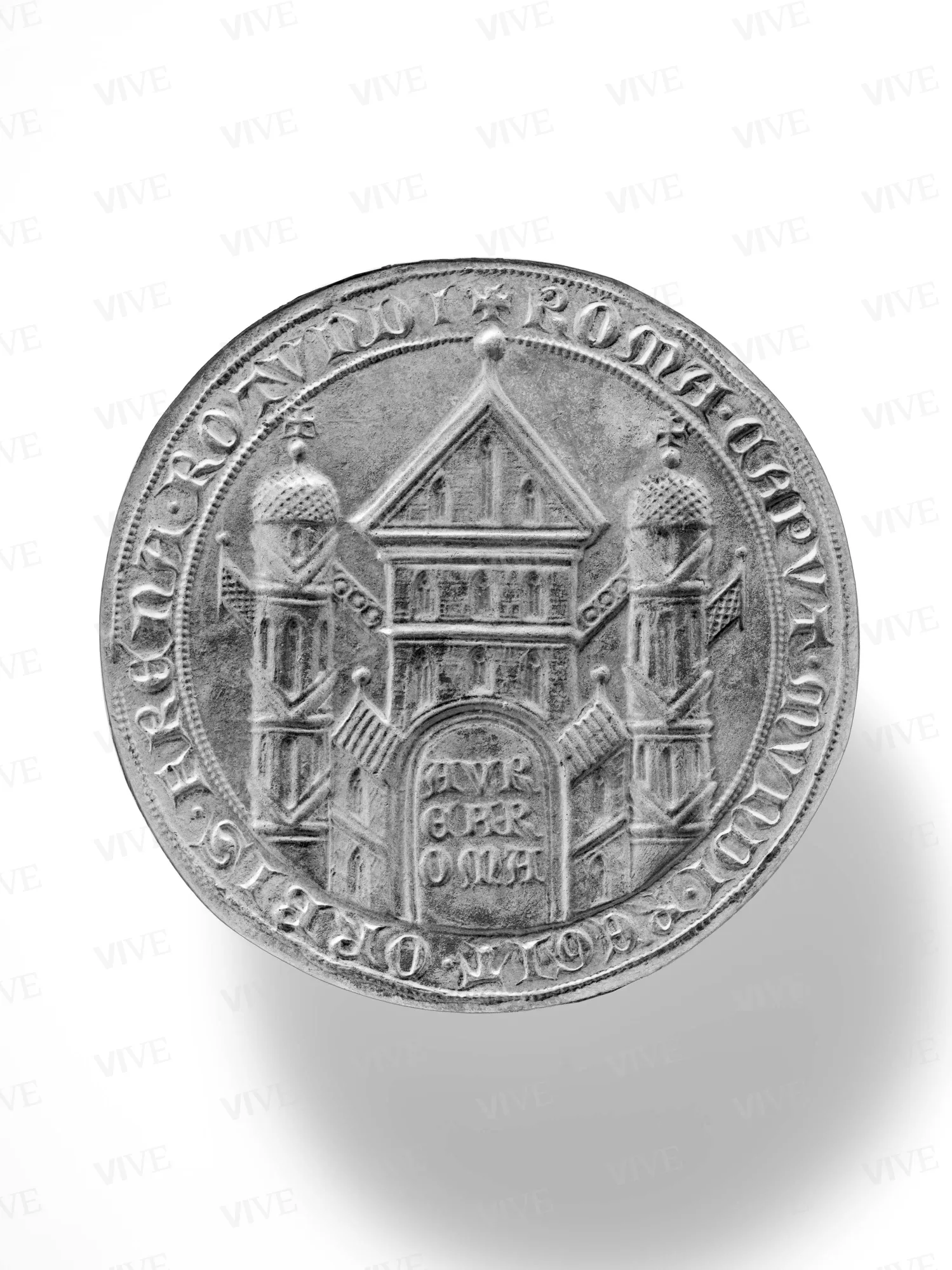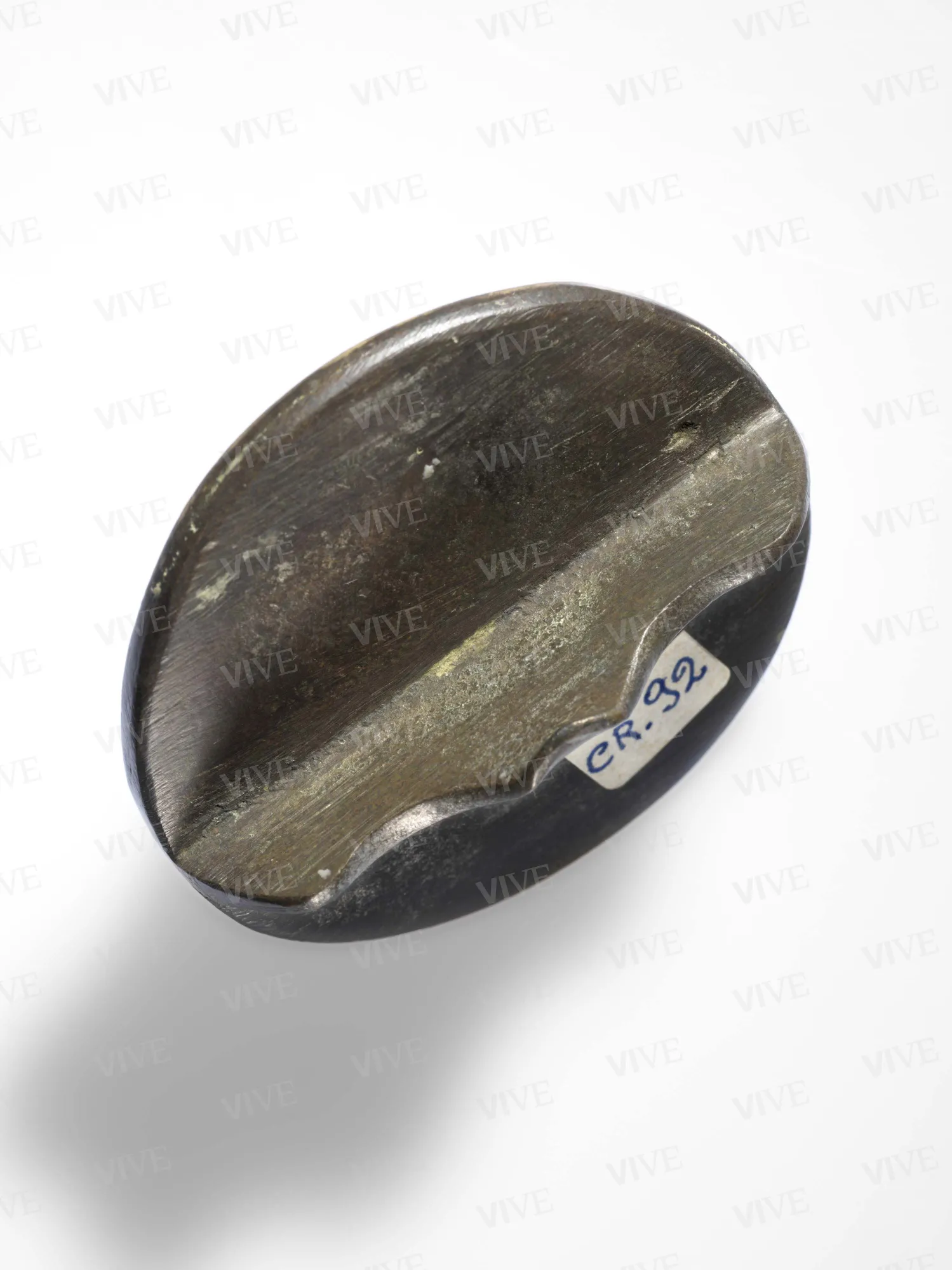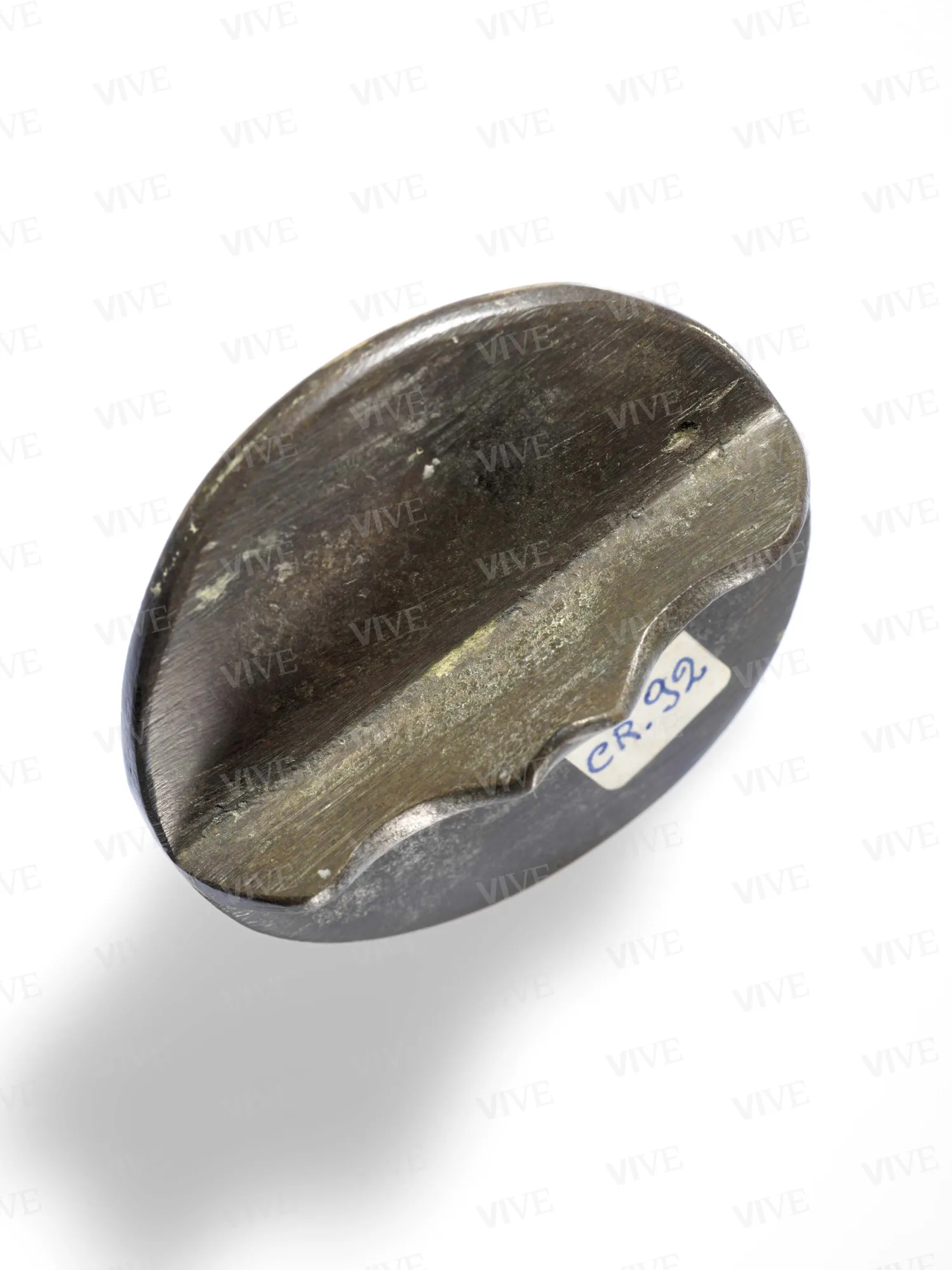Seal matrix with representation of the city of Rome
Western European production Modern copy from original dated 1355
Round seal matrix whose perimeter contains the legend “+ ROMA . CAPVT . MVNDI . REGIT . ORBIS . FRENA . ROTVNDI.” The field is occupied by the façade of a church with a high pediment around which the city walls are punctuated by two round towers surmounted by a dome. On the gateway to the city is inscribed the legend “AVR/EA R/OMA.” The image represents the city of Rome.
The matrix is probably a modern copy—if not an outright forgery—obtained by casting a positive matrix probably taken from an original cast.
Round seal matrix whose perimeter contains the legend “+ ROMA . CAPVT . MVNDI . REGIT . ORBIS . FRENA . ROTVNDI.” The field is occupied by the façade of a church with a high pediment around which the city walls are punctuated by two round towers surmounted by a dome. On the gateway to the city is inscribed the legend “AVR/EA R/OMA.” The image represents the city of Rome.
The matrix is probably a modern copy—if not an outright forgery—obtained by casting a positive matrix probably taken from an original cast.
Details of work
Catalog entry
Round seal matrix whose perimeter contains the following legend in uncial script closed by a double globe crown: “+ ROMA . CAPVT . MVNDI . REGIT . ORBIS . FRENA . ROTVNDI.” On the reverse is a profiled diametral handle. The field is occupied by the façade of a church with a high pediment around which the city walls are punctuated by two cylindrical towers surmounted by a dome. Over the gateway to the city is inscribed the legend “AVR/EA R/OMA” in uncial script. The image thus represents the city of Rome. The matrix reproduces the 1355 bull of Emperor Charles IV (1316–1378) (Bascapé 1969) and bears witness to a well-established iconographic tradition that traces its oldest precedent to the lead bull of Charlemagne (801).
Cecchelli (1951–1952) was the first to maintain that the church building is the old basilica of Saint Peter’s in the Vatican (the representation of which, however, lacks the iconographic connotations that would make it obviously the Roman church since the figurative city model proposed in the seal references a model that is typical of the Germanic area, devoid of real topographical references and adapted in this case to Rome—this can be seen, for example, in the buildings with pointed-arch windows and round domed towers, Benocci 1998). In the seal the image of Rome is thus formulated in relation to the imperial image: Charles IV thus appears as the defender of Christendom (Benocci 1998). The legend contains a Leonine verse of praise to Rome that had been very successful in other imperial bulls such as those for the coronation of Henry III (1046), Frederick I (1164), and Henry VI (1195) (Benocci 1998). Microchemical analysis (conducted with SEM-EDS microprobe) and micrometallographic analysis have revealed that the matrix is probably a modern copy—if not an outright forgery—obtained by casting a positive matrix probably taken from an original cast (Devoto 1998).
Chiara Paniccia
Entry published on 12 February 2025
State of conservation
Good.
Restorations and analyses
Microchemical metal analysis, conducted using an SEM-EDS microprobe, revealed the presence of the following metals: Cu (copper) 86.5 percent; Sn (tin) 7 percent; Pb (lead) 3.5 percent; Zn (zinc) 3 percent; Fe (iron), Mn (manganese): traces. In some areas of the seal there are traces of a silvery-white metallic coloration, indicating the presence of almost pure tin probably applied by direct hot bath over the entire seal.
Micrometallographic analysis revealed that the matrix is probably a modern copy—if not a forgery—obtained through the casting of a positive matrix probably taken from an original cast (Devoto 1998).
Inscriptions
«+ ROMA . CAPVT . MVNDI . REGIT . ORBIS . FRENA . ROTVNDI.»;
«AVR/EA R/OMA».
Provenance
Roman Collezione Corvisieri, 1903-1905.
Exhibition history
Roma, Castel Sant'Angelo, Esposizione internazionale di Roma, February 1911.
References
Capobianchi Vincenzo, Appunti per servire all'ordinamento delle monete coniate dal Senato romano dal 1184 al 1439 e degli stemmi primitivi del comune di Roma, in «Archivio della Società Romana di Storia patria», 18, 1895, pp. 1-82;
Capobianchi Vincenzo, Immagini simboliche e stemmi di Roma, in «Archivio della Società Romana di Storia patria», 19, 1896, pp. 347-389;
Inventario dei sigilli Corvisieri, catalogo dell'Esposizione internazionale di Roma 1911. Mostre retrospettive in Castel S. Angelo, catalogo della mostra (Roma, Castel Sant'Angelo, febbraio 1911), Roma 1911, p. 16;
Sella Pietro, Le bolle d'oro dell'Archivio Vaticano, Città del Vaticano 1934, p. 52;
Cecchelli Carlo, Vita di Roma nel Medio Evo, I, Roma 1951, pp. 112-115;
Bascapé Giacomo, Sigillografia. Il sigillo nella diplomatica nel diritto, nella storia, nell'arte, Milano 1969 (1961), p. 127;
Benocci Carla,Carlo IV di Lussemburgo (1316-1378), Re dei romani (1346-1378), I Re di Boemia (1347-1378), Imperatore (1355-1378). Riproduzione moderna, in Balbi De Caro Silvana, Benocci Carla (a cura di), La collezione sfragistica. Il Medagliere del Museo del Palazzo di Venezia, Roma, Museo nazionale del Palazzo di Venezia, I, Roma 1998, p. 14, n. 1;
Devoto Guido, Appendice Sigillo n. cat. 1, in Balbi De Caro Silvana, Benocci Carla (a cura di), La collezione sfragistica. Il Medagliere del Museo del Palazzo di VeneziaRoma, Museo nazionale del Palazzo di Venezia, I, Roma 1998, p. 15.

